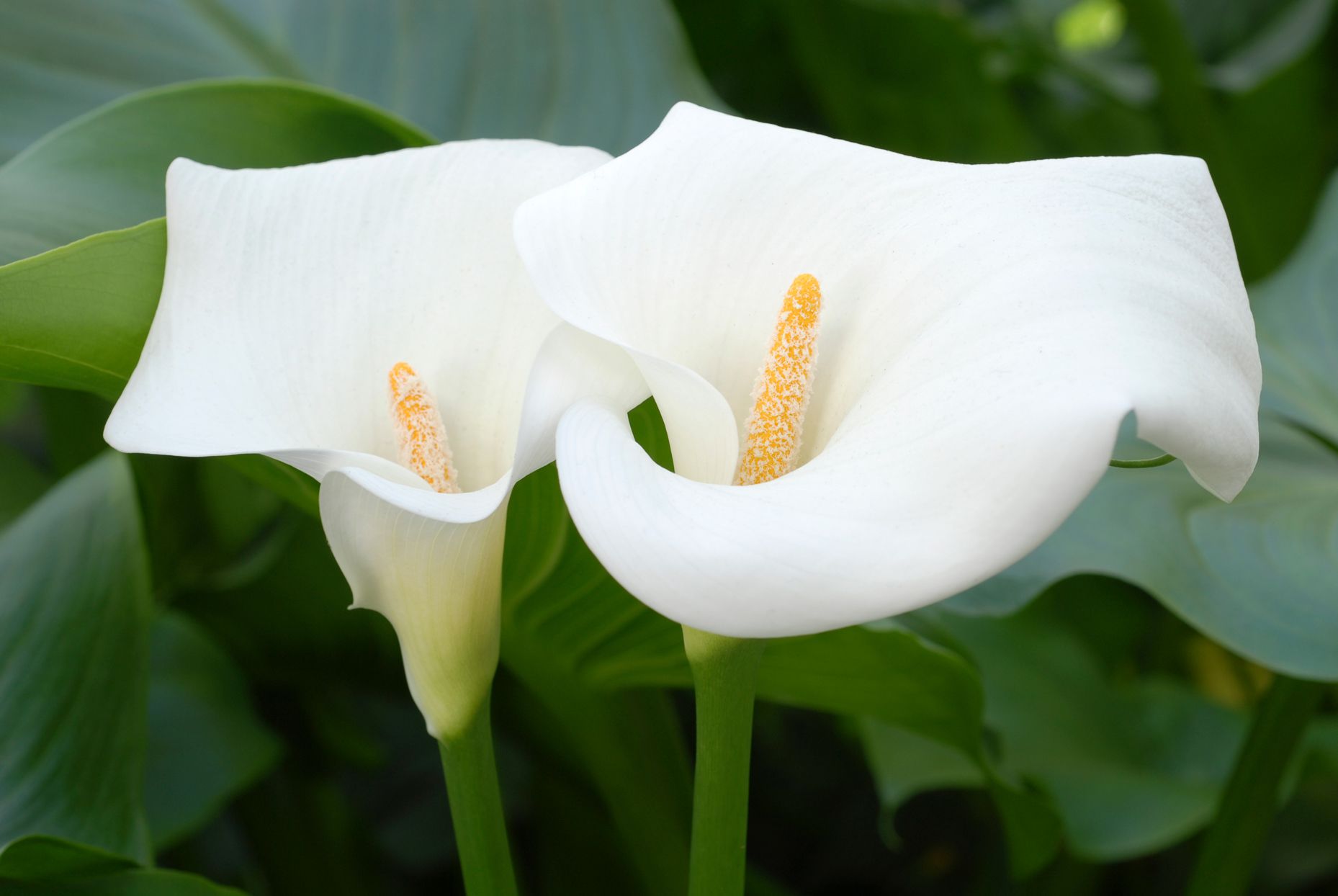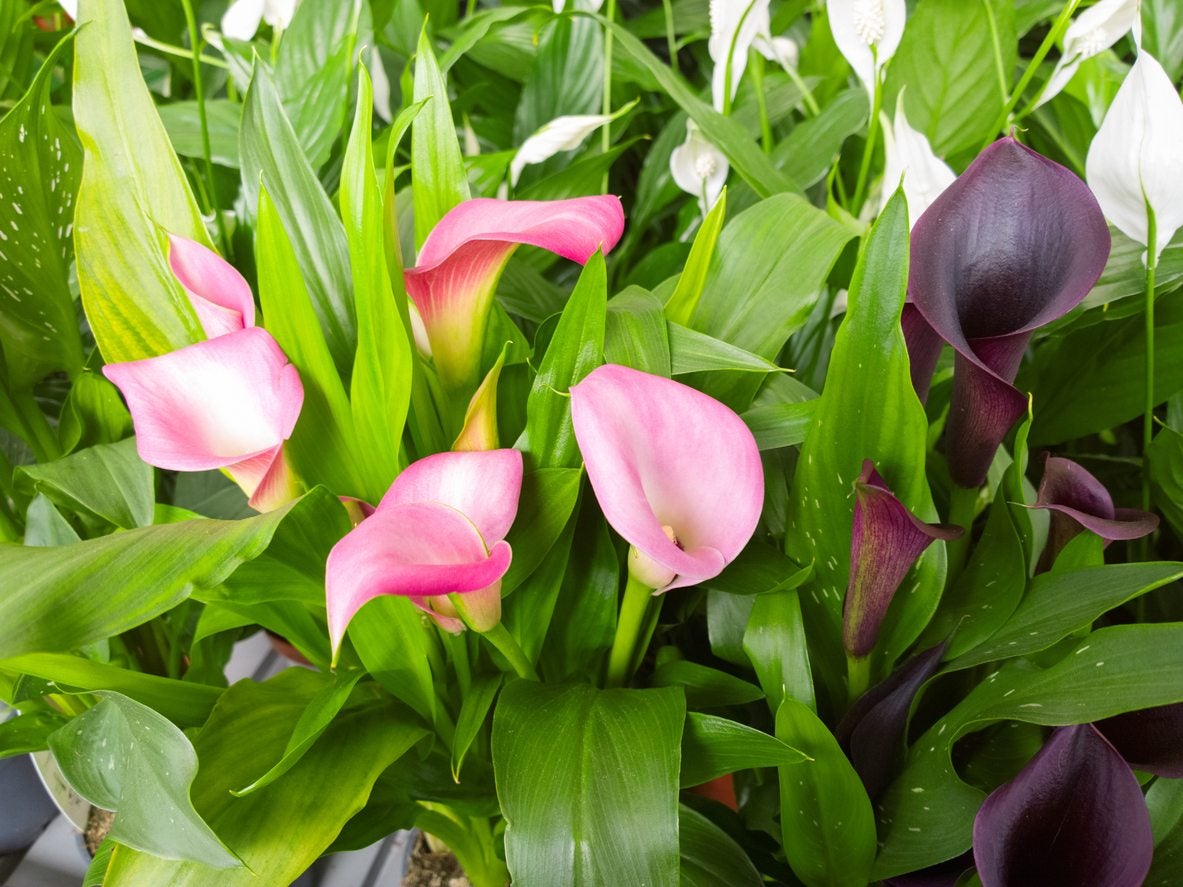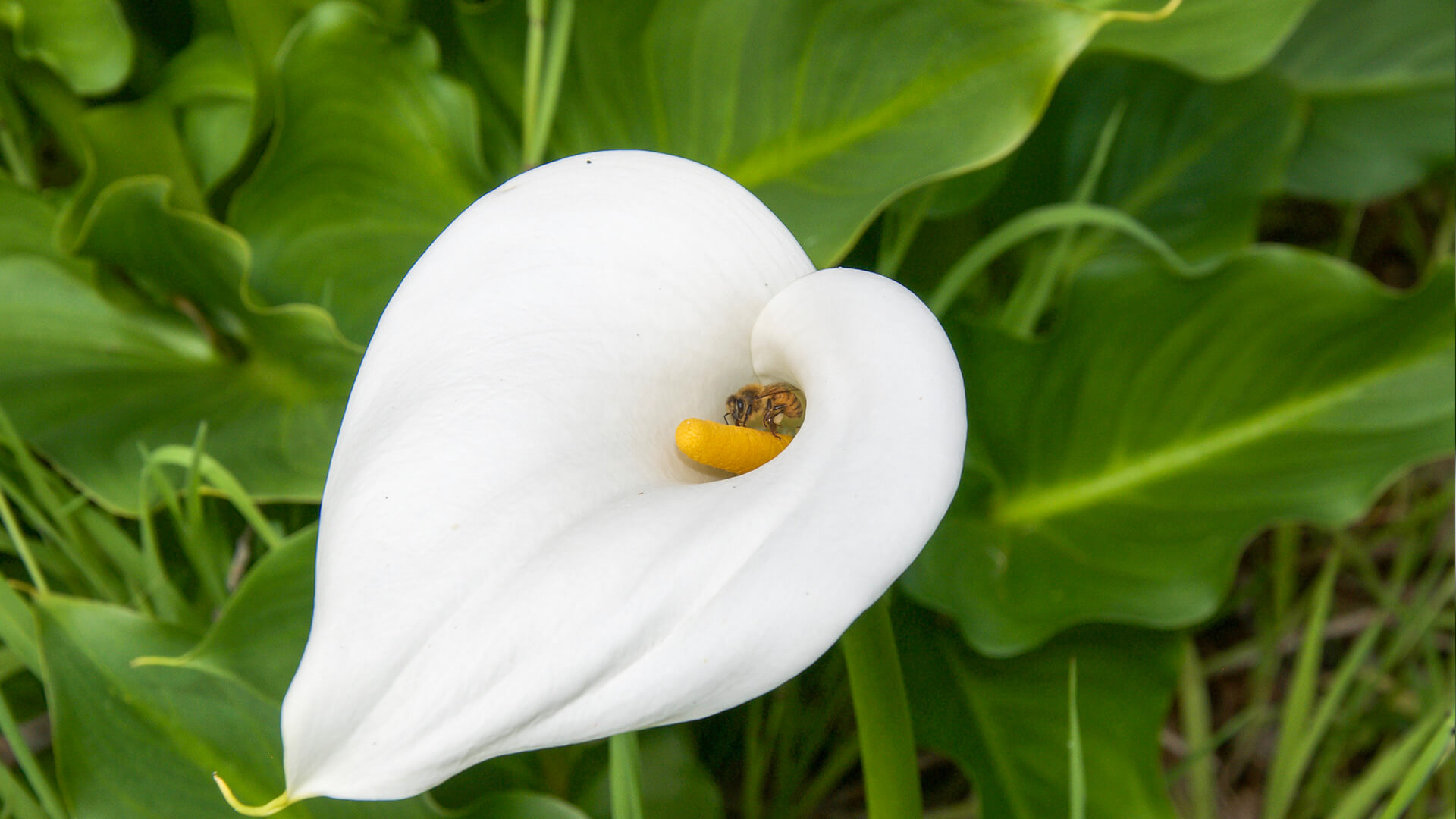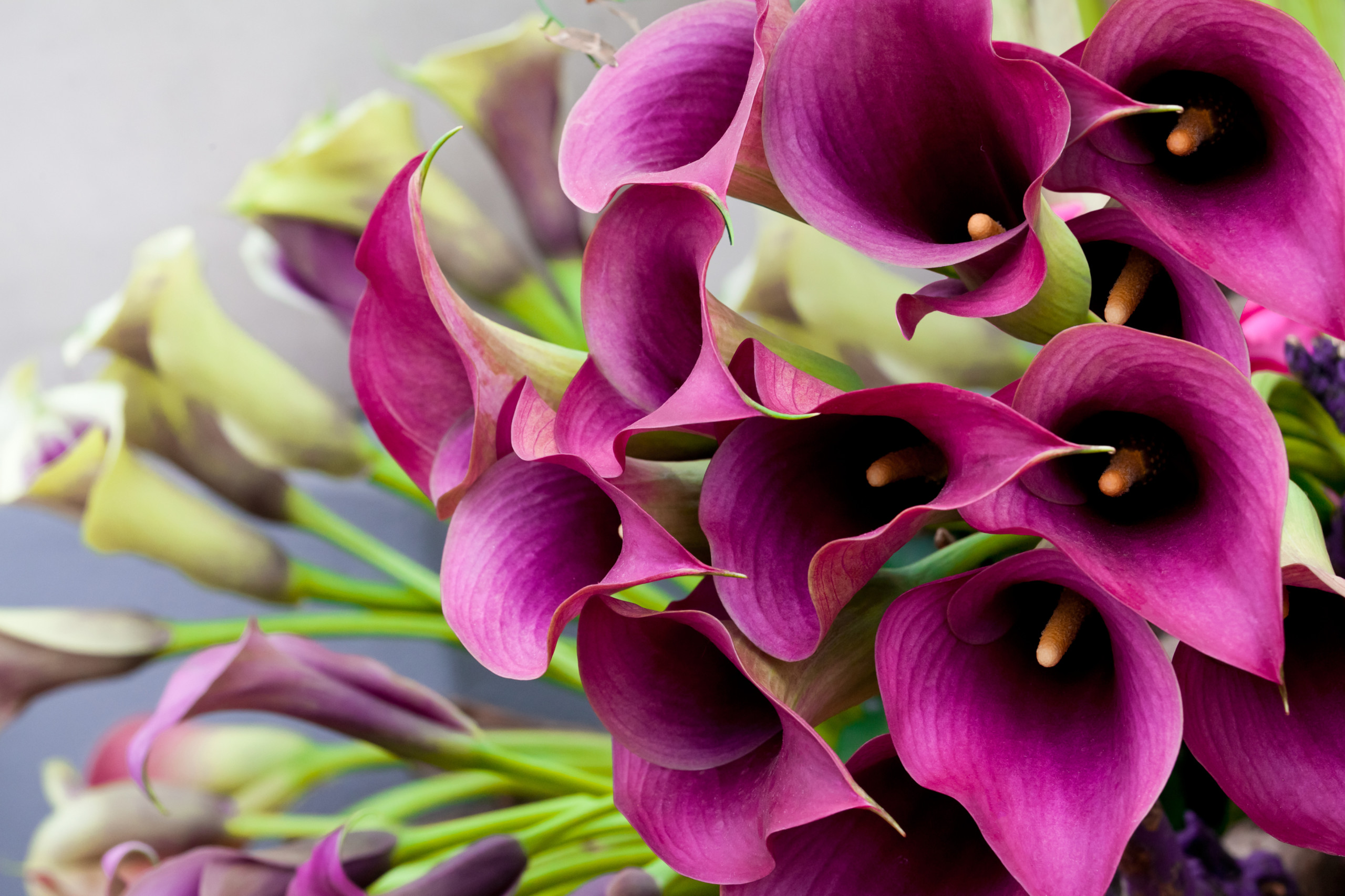Calla lilies are known for their graceful, trumpet-like shape and stunning colors that go beyond the traditional white. These versatile flowers bring charm to perennial gardens, patio containers, and cutting gardens during the summer months. Their blooms are not only long-lasting but also attract butterflies and hummingbirds. Here’s everything you need to know about planting, growing, and maintaining calla lily bulbs.
Introduction to Calla Lilies
Calla lilies, scientifically known as Zantedeschia, are not true lilies but are native to southern Africa. In USDA zones 8 to 10, they are classified as tender perennials. However, they can also be grown as annuals, in containers, or even indoors as houseplants in other regions. Calla lilies are typically planted in the spring, with their stunning blooms appearing for 6 to 12 weeks throughout the summer.
These plants feature distinctive trumpet-shaped flowers and long, sword-like leaves, making them popular choices for weddings, garden borders, and vibrant container arrangements. Each bloom consists of a spathe (a modified leaf) that wraps around the spadix, the spike at the center of the flower, similar to plants like caladiums.
Available in a wide range of colors, including white, yellow, burgundy, near-black, rose, pink, orange, and multi-colored varieties, calla lilies grow between 1 and 3 feet tall, with each rhizome spreading about a foot in diameter.

Planting Calla Lilies
Calla lilies thrive in full sun or partial shade. While full sun promotes the brightest blooms, some afternoon shade is beneficial in hotter climates to prevent stress. They prefer moist, well-draining soil rich in organic matter. However, be cautious not to overwater, as soggy conditions can cause rhizomes to rot.
When growing calla lilies indoors, choose a sunny spot, such as a south-facing window, where they can soak up plenty of light—something that might be too intense for other houseplants like philodendrons.

When to Plant Calla Lilies
As summer-blooming bulbs, calla lilies should be planted in the spring after the last frost, once the soil temperature reaches at least 65°F. Cooler soil temperatures can slow down their growth temporarily. To get a head start, you can plant calla lilies in pots a month or two before moving them outdoors. Use large containers to prevent them from becoming root-bound and gradually acclimate them to outdoor conditions before planting.

How to Plant Calla Lilies
Calla lily rhizomes are distinct from typical long rhizomes; they are rounded, irregularly shaped, and about the size of a small cookie. Follow these steps for successful planting:
- Incorporate compost into the soil and loosen it to a depth of about 6 inches.
- If planting in a container, ensure proper drainage to prevent waterlogging.
- Plant the rhizomes with the growing side up, about 2-3 inches deep, and cover with soil, gently firming it down.
- Water thoroughly after planting but then water sparingly until new leaves appear. Once several leaves have grown, increase watering to maintain consistently moist soil. Overwatering before the plant starts taking up water can lead to root rot.
Calla lilies generally sprout within two weeks of planting and will bloom in 2-3 months, depending on temperature and sunlight conditions. With the right care, these elegant flowers can transform any garden or container into a vibrant display of color and grace.

Growing Calla Lilies
Calla lilies prefer evenly moist soil but require good drainage to prevent root rot. While they can tolerate damp conditions, excessively soggy soil will harm them. In climates with cooler temperatures (zones 7 or lower), plant calla lilies in areas with full sun to maximize their growth and flowering. In hotter regions, consider planting them where they can enjoy some afternoon shade. If your calla lilies are in containers, you have the flexibility to move them around to find the best spot.
Mulching around the plants helps maintain soil moisture, reduces watering needs, and minimizes weed growth. Apply mulch as needed to keep the soil from drying out, especially in sunny areas.

Overwintering Calla Lilies
In colder climates where frost is common, calla lilies need to be dug up and stored indoors over the winter. Temperatures dropping to 25°F or below can kill calla lilies, so taking precautions is essential.
- Before the first frost, cut off the leaves and trim the stem to about 1-2 inches above the ground.
- Carefully dig around the rhizome, lift it from the soil, and brush off any excess dirt. Allow the rhizomes to cure indoors in a cool area (60-70°F) for about three days.
- Once cured, store the rhizomes in a box or tub filled with slightly moist sawdust or pine shavings. The material should be nearly dry; if it feels damp, allow it to dry slightly before sealing.
- Place the stored rhizomes in a cool, dark place at around 50°F, such as an unheated basement or garage. Check the rhizomes periodically to ensure they are not dehydrating or becoming too damp, which could lead to rot.

Popular Calla Lily Varieties
- ‘Purple Sensation’: Features stunning royal purple blooms with a light gold spadix.
- ‘Black Star’: Nearly black flowers with green leaves speckled with cream spots, making it a dramatic choice.
- ‘Morning Sun’: Resembles a sunrise with vibrant orange centers fading to red edges.
- ‘Red Alert’: Bright firetruck red blooms with lightly variegated leaves—sure to stand out in any garden.
Calla lilies are often sold in mixes, allowing you to choose a color scheme that complements your garden or patio decor.
Harvesting Calla Lilies
Calla lilies are highly prized as cut flowers, particularly for weddings and special occasions. To harvest, don’t cut the stems like other flowers. Instead, grasp the base of the stalk and gently pull to remove the flower and stalk from the plant. Properly harvested calla lilies can last up to two weeks in arrangements.

Wit and Wisdom About Calla Lilies
- Calla lilies are often sold as potted plants around Easter. Instead of discarding them after blooming, place the plant in a cool, dark spot without water for about two months. This dormant period allows the plant to rest, after which it can be reintroduced to light and water to encourage new growth and blooms.
- Calla lilies are often mistaken for canna lilies, which are much larger, reaching up to 5 feet tall, with blooms clustering at the top of long stalks.
- To propagate calla lilies, simply divide the rhizomes and replant them.
Calla lilies bring elegance and vibrant color to any garden. With proper care and attention, they can thrive year after year, adding beauty to your landscape or indoor spaces.
